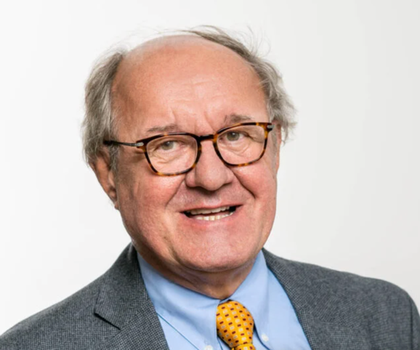Learning and Plasticity in the Auditory System: Focus on Tinnitus
Like all mammalian sensory systems, the auditory system depends on learning and plasticity well into adulthood. This is especially evident for higher cognitive functions like language and music. While my laboratory at Georgetown University does work on the evolution of communication, in both humans and nonhuman primates, today’s talk will focus a clinical topic, tinnitus. Bringing my engineering background to the question of “what is tinnitus”, I will tackle the problem as one of a broken noise cancellation system, characterized as auditory-limbic dysregulation” in a fronto-striatal gating system.
I will present an overview of the changes in brain structure and function of tinnitus patients based on neuroimaging results from our lab. Auditory and limbic brain regions, as well as cortico-limbic connections are relevant for the chronic perception of the tinnitus signal. In contrast, changes in the insula, cingulate cortex, frontal cortex and the precuneus can be seen in relation to the perceived tinnitus distress. Future research should aim at providing further evidence to understanding the underlying pathophysiology of chronic tinnitus and thereby identifying suitable target regions for neuromodulatory approaches.
Biography
Since the early stages of my career, my research interests have been in the functional specialization of the cerebral cortex and the plasticity of sensory systems (Rauschecker, Nature, 1979, 1987). I have pioneered work on cross-modal plasticity and sensory substitution in early deafness and blindness (Rauschecker, TINS, 1995), and this has been my longest continuous line of research. I developed the first dual-stream model of auditory cortical processing in nonhuman primates (Rauschecker & Tian, PNAS, 2000) as well as models of speech and music processing in humans (Rauschecker & Scott, Nature Neuroscience, 2009). I have 30 years of experience in single-unit electrophysiology of nonhuman primates, and 25 years of experience with functional magnetic resonance imaging (fMRI) of the human auditory system. In addition to my studies in basic cognitive and systems neuroscience, I have experience with research on translational topics in auditory and neurological disorders, including cochlear implants (Rauschecker & Shannon, 2002). Through functional and structural imaging studies in humans, I have discovered the role of frontostriatal gating in tinnitus, which has become one of the leading models of tinnitus (Rauschecker et al., Neuron, 2010; Leaver et al., Neuron, 2011). I have numerous high-impact publications in peer-reviewed journals and have been the mentor of >30 graduate students and postdoctoral fellows. My work has been funded continuously by grants from the National Institutes of Health (USA), the National Science Foundation (USA), as well as by private foundations.
